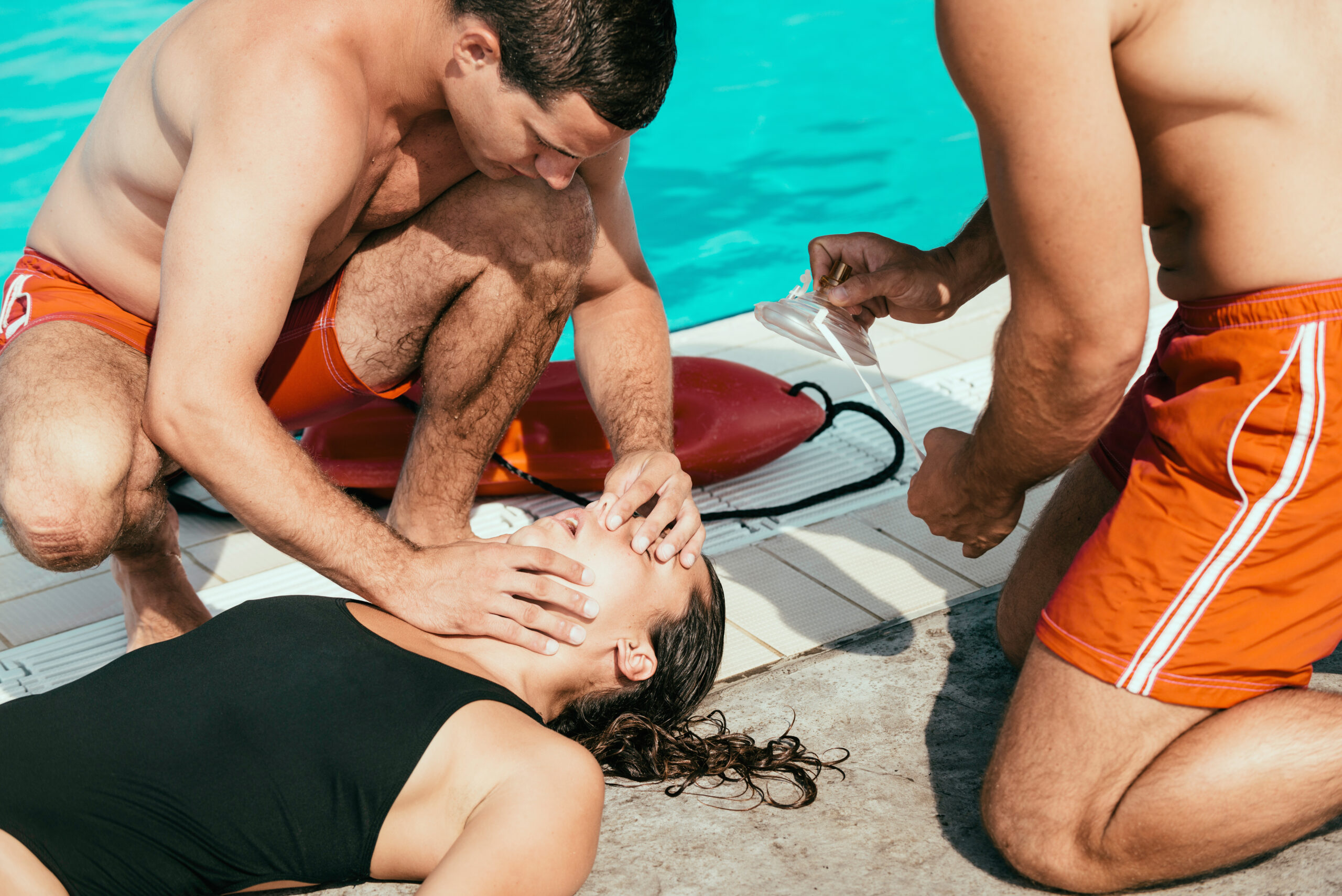Special Resuscitation Situations

Resuscitation after a drowning
Drowning
Drowning should involve a multi-agency approach in which organizations work together to provide the different phases of care to a drowning person. The phases involve the following: (1) aquatic rescue, (2) on-scene resuscitation, (3) transport to the hospital, and (4) in-hospital care.
Upon bringing a submerged individual out of the water into a safe environment, rescuers should provide five rescue breaths immediately (A-B-C instead of C-A-B). The lone rescuer must provide five cycles of CPR before leaving the patient to activate EMS. If there is more than one rescuer, other team members should retrieve an AED and activate the emergency response system.
If the location or situation prevents bringing the individual out of the water, mouth-to-mouth ventilation performed while in the water may be helpful if the rescuer is skilled in doing it.
Foreign-Body Airway Obstruction (Choking)
The most common cause of foreign-body airway obstruction (FBAO) in adults occurs while eating. Immediate recognition of FBAO is key to the patient’s survival. It is critical to differentiate FBAO from fainting, cardiac events, seizures, and other conditions that cause sudden respiratory distress, cyanosis, or loss of consciousness.
A patient typically shows the universal choking sign when they automatically clutch their neck. If a rescuer notices this, they must ask, “Are you choking?” A choking person nods if unable to speak, verifying that they are choking.
A rescuer intervenes for severe FBAO with the following signs and symptoms:
- Increased work of breathing
- Poor air exchange
- Silent cough
- Cyanosis
- Inability to speak or breathe

Universal sign of choking
For mild FBAO, the rescuer allows the individual to relieve the foreign body on their own. The rescuer must NOT intervene. With mild FBAO, people typically cough out the obstruction forcefully.
However, when severe FBAO occurs, the rescuer must intervene immediately. The rescuer activates the emergency response system if alone, but if others are present, they should instruct another rescuer to call EMS. The rescuer then applies five abdominal thrusts to the choking person.
Related Video: How to Treat Conscious Choking Adults
If the person becomes unresponsive, the rescuer must perform standard CPR. After 30 chest compressions and before performing ventilations, the rescuer may observe the patient’s mouth for the foreign body and attempt to remove it if visible. Blind finger sweeps inside the mouth are no longer recommended because there is a risk of pushing the foreign body deeper into the respiratory tract.
Related Video: CPR Techniques – Treating an Unconscious Choking Adult
Choking Individuals in Specific Circumstances
A person who is choking and conscious and is pregnant or obese requires use of the modified chest thrust as the abdominal thrust may be ineffective. See the following educational video:
Related Video: Procedures for Treating an Obese Choking Victim – New 2020 AHA / ILCOR Guidelines